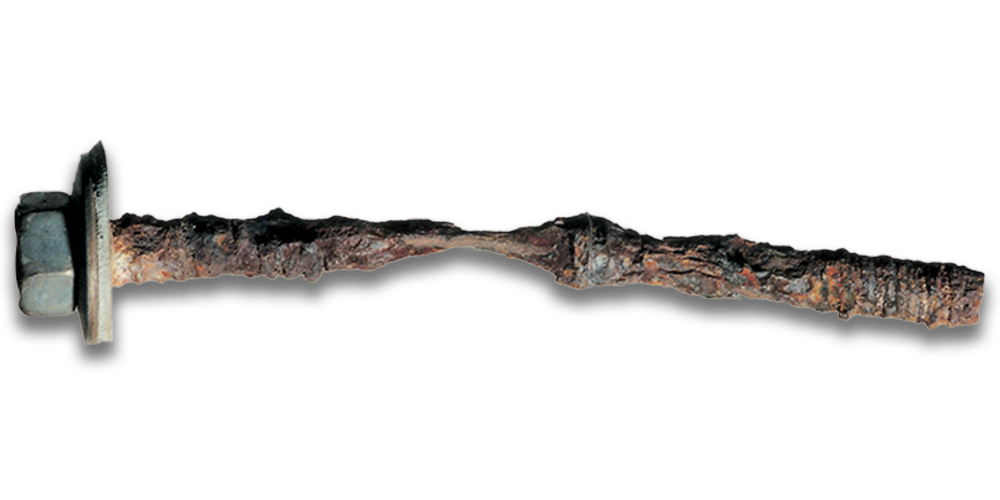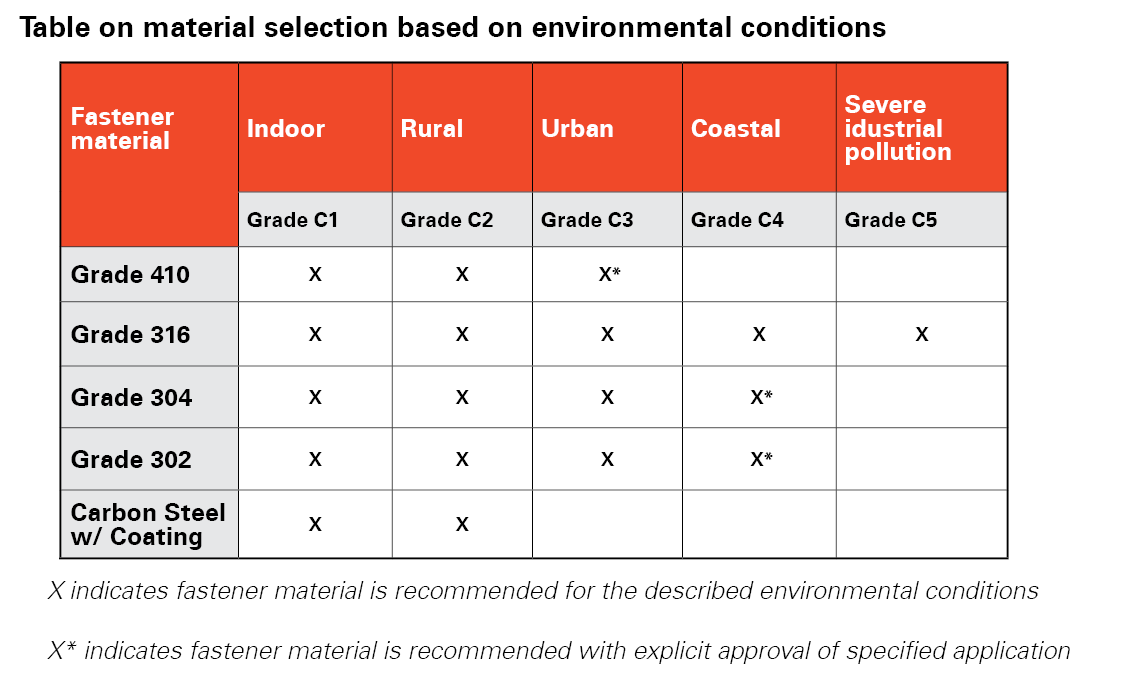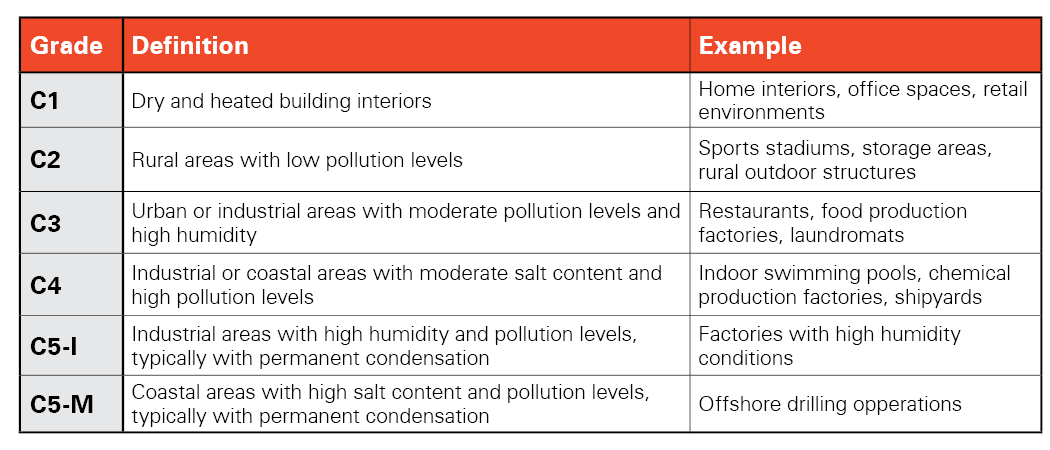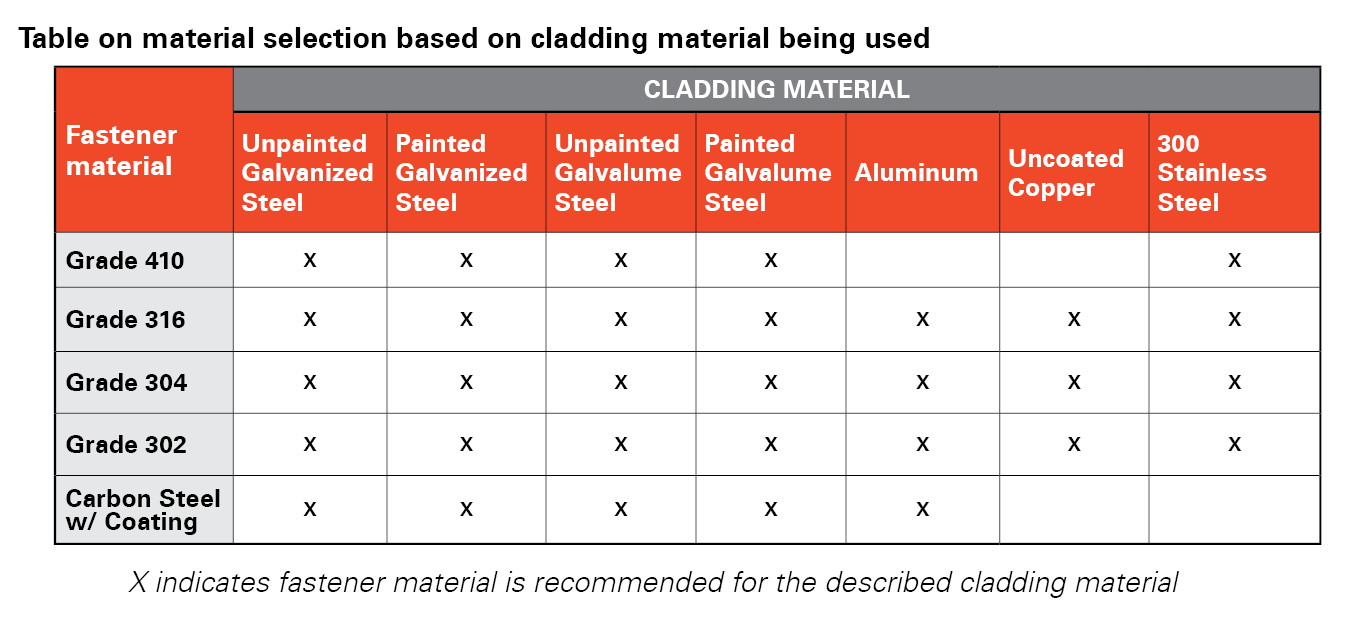304 vs 316 stainless steel screws - strength, corrosion resistance, and cost
Stainless steel (SS) fasteners are utilized in the construction industry to satisfy corrosion resistance and strength requirements. This document analyzes the properties of two popular types of stainless steels—304 versus 316—as well as which materials are best suited for metal-to-metal connections
Stainless steels are commonly offered in nine grades categorized by materials added to the steel during production. The resulting alloys have different materials, strength, and corrosion properties. Alloy grades 304 and 316 are by no means the only steels featured within SFS's line of fasteners, but they are some of the most in-demand amongst builders.

304 versus 316 stainless steel: differences in composition
304 SS is considered a "general purpose" stainless steel and is characterized by the inclusion of 18% chromium (Cr) and 8% nickel (Ni) in its' alloy composition. In contrast, 316 Stainless steel is characterized by the inclusion of 16% chromium (Cr), 10% nickel (Ni), and 2% molybdenum (Mo). The presence of molybdenum provides added strength, as further explored below.304 versus 316 stainless steel: differences in corrosion
Stainless steel in general offers significant corrosion resistance when compared to standard carbon steel materials. Within the stainless steel classifications, there are grades that will outperform others. The Increased nickel content in 316 SS contributes to its improved corrosion resistance compared to 304. As such, 316 is recommended for use in coastal regions where there is an increased salt content, or in areas where there are higher levels of pollution or corrosive chemicals, particularly chloride.
304 versus 316 stainless steel: differences in strength
While both 304 and 316 stainless steel are strong, the addition of the Molybdenum in the 316 gives it a small advantage in strength over the 304. The following table displays the characteristics of the two materials. From Table 1, it can be seen that the 316 stainless steel offers greater yield strength (where the material becomes permanently deformed) and decreased elongation and tensile strength. There is little difference between alloys when it comes to strength, but corrosion resistance is where the 316 truly surpasses the 304.
Cost analysis
Another difference between the 304 and 316 is the cost of the material. When made into fasteners, the 304 SS tends to be more affordable. For this reason, 304 SS products are more popular among consumers. It meets standard corrosion requirements at a lower cost than the higher grade material. Alternatively, 316 SS fasteners tend to be used by contractors who operate in highly corrosive environments in order to prevent stress corrosion cracking.
Other stainless steel grades
304 and 316 stainless steel fasteners are not the only material options available for consumers. While the 300 series offers superior corrosion resistance, the 400 series provides an elevated hardness. For example, 410 SS has a low alloy content, meaning that there are fewer materials added to its composition, resulting in a higher carbon content. This increased amount of carbon gives the 400 series of stainless steels increased strength characteristics as well as better performance at elevated temperatures while still maintaining some corrosive resistance. Due to the lower alloy content in the 400 series of stainless steel, fasteners made from this material tend to cost less than the 300 series parts.
Material selection guide
Review the tables below to learn more about 304, 316 and other popular SS grades to determine the optimal choice for your upcoming project.
Environmental Conditions
The following chart describes the environmental conditions in which certain grades of stainless steel are appropriate. All environmental conditions are based on EN ISO 12944 Exposure Categories. Results based on SFS internal testing and supplemented by The Nickel Institute, "Design Guidelines for the Selection and Use of Stainless Steel" (Released by AISI).

Environmental condition explanation
Environmental grades are taken from ISO 12944. They do not describe specific quantitative criteria for pollution levels, but are instead meant to be standard guidelines for generalized environmental conditions.

Material connections
The following chart describes the situations in which a fastener of a particular material can be installed into a surface of a particular material. The information from this chart is derived from the MCA technical document, "Fastener Compatibility with Profiled Metal Roof and Wall Panels".

SFS product lines
SFS offers multiple products that utilize the corrosive resistant properties of 304 stainless steel. Popular examples include the Bi-Met 300® series curtain wall screws series or in the stainless self-tappers. In addition, many of our cladding fasteners for rainscreen systems and panel screws are offered with both 304 and 316 to accommodate a diverse range of environments, including highly corrosive conditions.
We welcome you to explore our extensive range of fasteners to find the best fit for the intended application, climate, and budget. Call 1 800 234 4533. Our team is ready to answer all your questions and help place your order.
Summary of 304 vs 316 Stainless Steel
Stainless steel fasteners can offer a wide variety of strength and corrosion-resistant properties to meet your requirements. Each grade of stainless steel will have different properties and provide advantages in particular environments. It is important for contractors to choose the correct material for their fasteners based on their job site environment. This document serves as a tool to help effectively make the correct fastener selection based on your needs.

 English (Canada)
English (Canada)
 čeština (Česká republika)
čeština (Česká republika)
 magyar (Magyarország)
magyar (Magyarország)
 Deutsch (Deutschland)
Deutsch (Deutschland)
 eesti (Eesti)
eesti (Eesti)
 español (España)
español (España)
 português (Portugal)
português (Portugal)
 suomi (Suomi)
suomi (Suomi)
 français (France)
français (France)
 English (United Kingdom)
English (United Kingdom)
 italiano (Italia)
italiano (Italia)
 Nederlands (Nederland)
Nederlands (Nederland)
 norsk, bokmål (Norge)
norsk, bokmål (Norge)
 polski (Polska)
polski (Polska)
 svenska (Sverige)
svenska (Sverige)
 Türkçe (Türkiye)
Türkçe (Türkiye)

